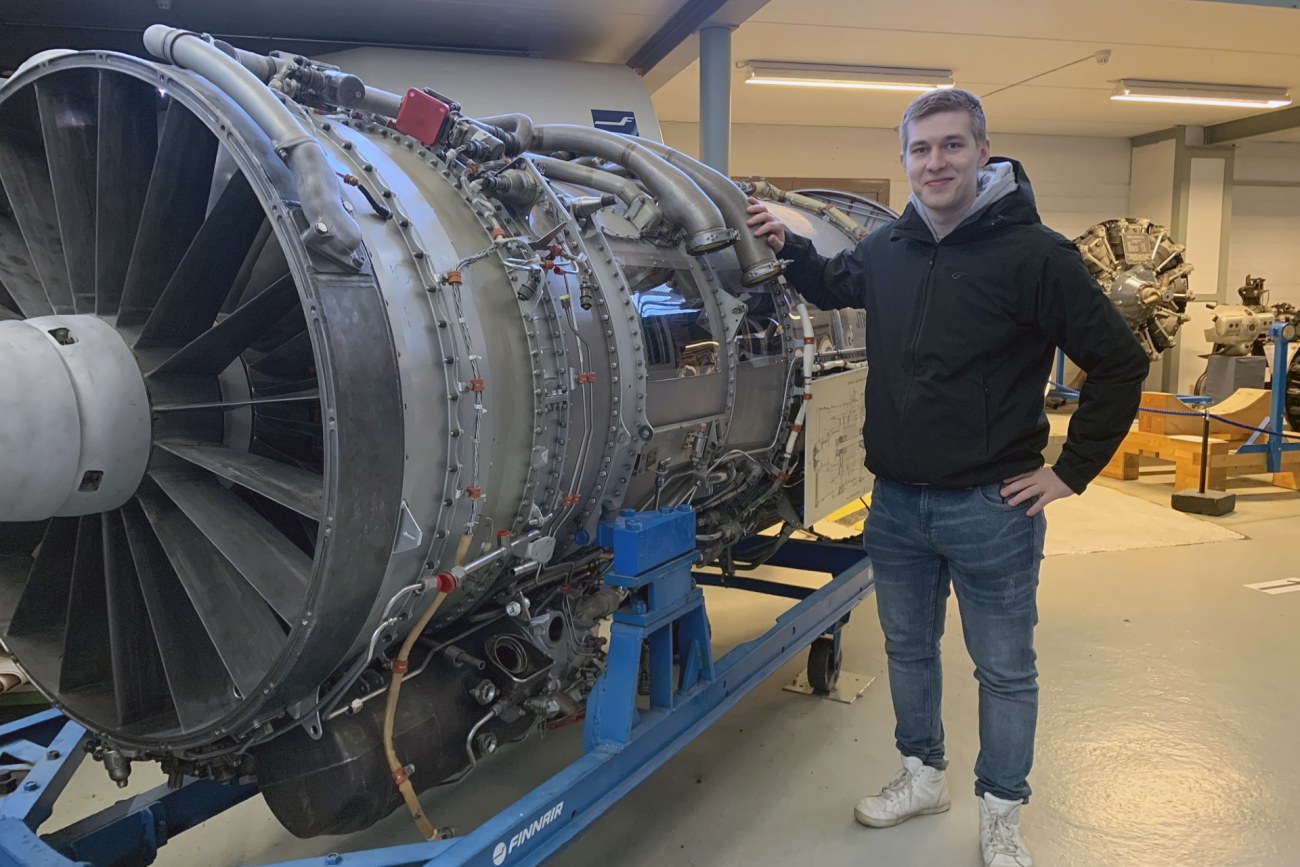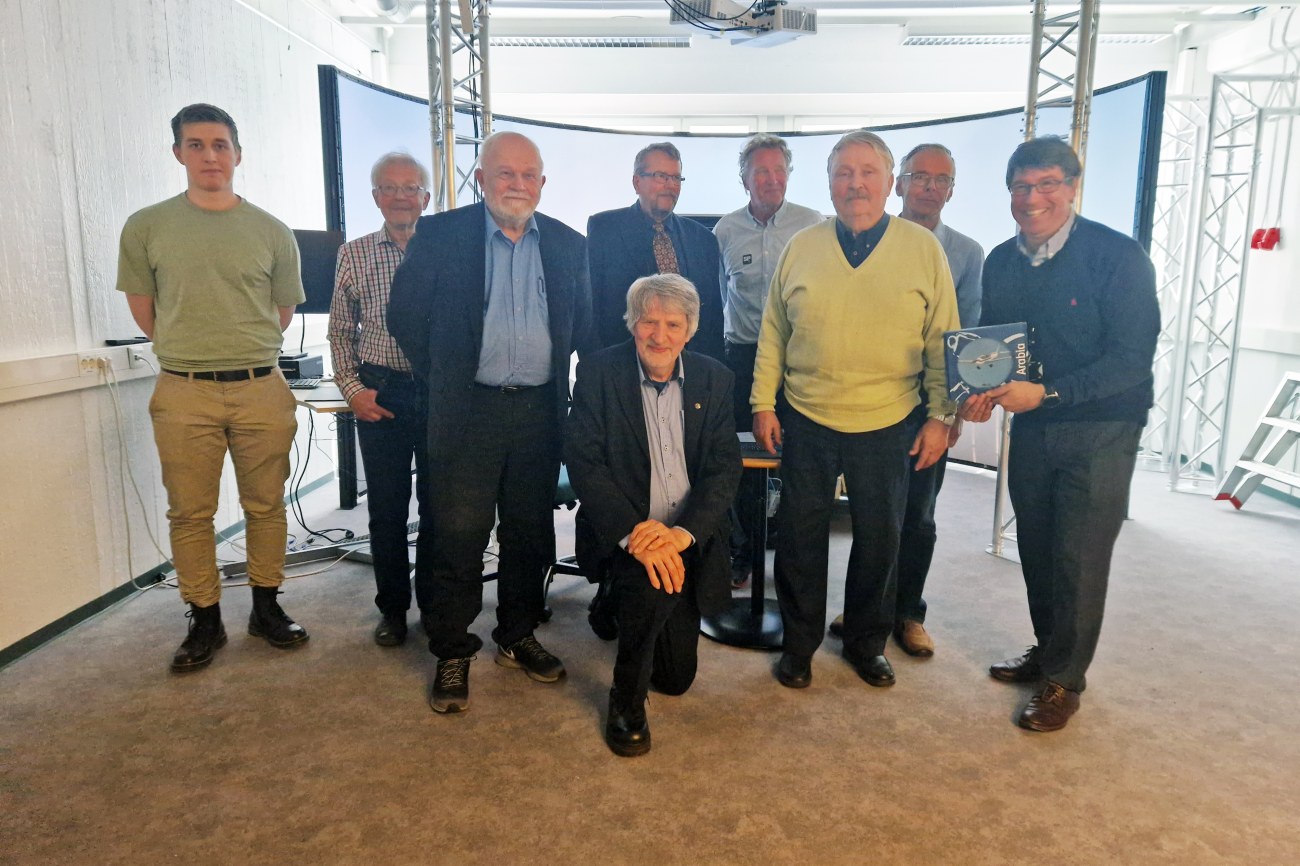Paving the Way for Sustainable Aviation: Exploring Possibilities Through Multidimensional Research

Stephen Wright is an industry professor who teaches aircraft engineering at Tampere University. He has been teaching at the Tampere University since 2019. He finds great fascination in incorporating emerging technologies and seamlessly integrating them into aircraft systems.
“The utmost importance lies in ensuring that these systems function flawlessly. If anything goes wrong, everyone on the plane, especially the pilots, are about to have a very bad day at work,” Wright humorously remarks.
Research at Tampere University encompasses various aspects of sustainable aviation. The focus lies on the research of synthetic aviation fuels and their deployment as well as on analyzing the impact and efficacy of their usage.
Additionally, research delves into the role of hydrogen in aviation, aiming to facilitate the development and safe utilization of H2 fuel in the industry. Furthermore, studies are conducted to enhance human error management in the sector, exploring ways to improve overall safety and performance.
However, the transition into sustainable alternatives poses significant challenges, as the properties of these new green fuels differ greatly, requiring substantial modifications to aircraft designs.
“Currently, the primary focus of sustainability in aviation revolves around developing larger aircraft capable of flying with new green fuels within the next five years. Right now, the novel hybrid powerplant systems are researched to allow for conventional, new multifuel and battery-powered electric flight of aircraft up to 18 passengers,” Wright clarifies.
Hydrogen as an alternative
One example of advanced fuel synthesis is Neste MY SAF fuel, which is blended with JetA1 at approximately 2/3% mix levels in fuel farms. The goal for the future is to increase the percentage of green fuel up to 50%.
However, an inherent limitation arises: MY SAF fuel stocks partially rely on food sources. Since it is important to make sure humans have a sufficient amount of food, rather than growing plants to make artificial fuels, alternative options such as hydrogen are being explored.
While hydrogen is a promising consideration for addressing several challenges in aviation, it is not a comprehensive solution.
“Utilizing H2 as a fuel is more complex than simple combustion. Handling, transportation, and storage pose significant difficulties due to hydrogen's small molecular size, leading to issues such as diffusion through metal containers and pipes, which can cause structural deterioration,” Wright explains.
Teaching sustainability in aviation studies
Hans Hastio is a student in the Master's Program in Mechanical Engineering. He has conducted his bachelor's thesis in 2022 on the application of fuel cells and hydrogen in aviation. Right now, Hastio plans to pursue his master's thesis in co-operation with the Finnish Air Force where he has worked as a conscript trainer in the past.
“I find the complexity of the field to be its most intriguing aspect. Building an airplane requires a combination of various scientific disciplines, which is yet to yield an optimal solution,” Hastio says.

Although there isn’t a specific course on sustainability in the master's program, Hastio finds it integrated into the overall teaching approach.
“Sustainability concepts are incorporated into different courses, such as exploring composite structures made from natural fibers and considering sustainability from a systems perspective in computer systems-related classes. I think having courses solely dedicated to sustainability would be impractical within the limited two-year timeframe we have to cover a diverse range of subjects. If we would have one extra year then definitely,” Hastio ponders.
A degree in mechanical engineering opens doors to various career paths. Currently, Hastio is working with Wright on the revamping of the introductory course in aircraft engineering. The aim is to provide a broad understanding of aviation-related themes and phenomena focusing less on intricate details compared to advanced courses.
“The course is crucial in our curriculum as it allows anyone with an interest, regardless of their background, to enter the field of aircraft engineering and proceed to advanced courses. The course will be available online, for everyone. This way, a larger number of individuals interested in the field will have the opportunity to study a subject that, unfortunately, is not taught elsewhere in Finland,” Hastio describes.
The evolution of aircraft engineering education in Finland
When aircraft engineering studies first commenced in Finland, sustainability wasn't even a topic of discussion. Recently, a group of pioneering Finnish aircraft engineering students from the 1950s visited Tampere University to observe the current state of teaching. Back in their time, they pursued mechanical engineering at Helsinki University of Technology, now known as Aalto University.

According to the former students, education in the field has undergone significant evolution, becoming more multidimensional. In the 1950s, the focus predominantly revolved around designing and constructing aircraft. Technological advancements were vastly different and students had limited choices in terms of study programs, as everything was predetermined.
Presently, students have a wide range of options for specializing in their master's degree. Wright emphasizes the need for lifelong learning.
“Students can pursue aircraft engineering as a long or short major or even choose it as a minor. Moreover, they can tailor their studies by incorporating technical units to enhance their employability upon graduation if they have a specific industry or specialization in mind. It is understood that continuous learning becomes crucial post-graduation, as is the case in numerous professions, also in mine,” Wright reflects.
Text: Essi Niemenmaa







